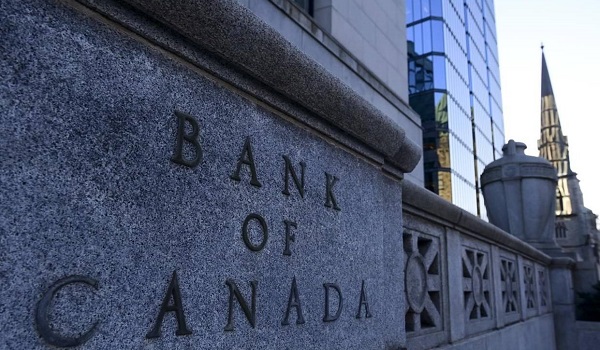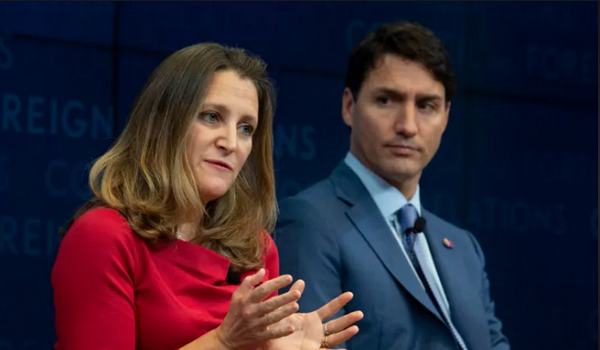Rate cut: Central banks around the world reversing, setting stage for exchange rate moves
After raising interest rates in tandem through much of 2022 and 2023, central banks around the world are starting to shift into reverse and ease monetary policy. However, markets expect a gap to open up between the more hawkish U.S. Federal Reserve and other advanced-economy central banks, setting the stage for sizable exchange-rate moves in the coming months.
This week saw two notable pivots from central banks. On Wednesday, the Bank of Canada cut its policy rate by a quarter-percentage-point to 4.75 per cent, becoming the first G7 central bank to ease monetary policy since interest rates began to rise in 2022.
The European Central Bank followed suit on Thursday with its own quarter-point rate cut, bringing the ECB’s benchmark interest rate to 3.75 per cent. This was the first rate cut in five years for the central bank, which oversees monetary policy for the 20 Eurozone countries.
In both cases, the decision was driven by the continued normalization of inflation, which has fallen from the high-single-digit or double-digit levels seen coming out of the COVID-19 pandemic and following the energy-price shock tied to Russia’s invasion of Ukraine in early 2022.
“As inflation gets closer to target, and we get into that final home stretch, central banks are getting out of firefighting mode,” James Rossiter, head of global macro strategy at TD Securities, said in an interview.
“Central banks have really been very reactionary for the last couple of years,” he said. “But now we’re getting back towards a more normal range … they’re starting to look more into the future, less at the past.”
That means policy makers are beginning to put more weight on the risk of crimping economic activity too much by maintaining restrictive interest rates, instead of just worrying about runaway inflation.
In Canada and Europe, where economic growth has essentially flatlined over the past year or so, interest rates are expected to decline further in the coming quarters. And it’s not just the ECB. The Swiss National Bank and Sweden’s Riksbank began cutting rates earlier this year, and the Bank of England is expected to start easing later in the summer.
The story looks different in the United States, where the economy continues to outperform expectations and where inflation, as a result, remains stubbornly above the U.S. Federal Reserve’s target.
At the start of the year, financial markets were pricing in as many as six rate cuts by the Fed in 2024. That has been dialed back to two cuts, beginning in September at the earliest.
“At one point in history, it was always the Fed to move first as the leader,” Jennifer Lee, senior economist with Bank of Montreal, said in an interview.
“But that’s not the case anymore because all the different countries are dealing with their own domestic issues, own domestic inflation trends. And if everyone waited for the Fed, it would probably have been a mistake at this point.”


If the Fed remains on hold while other central banks proceed with rate cuts, that could impact exchange rates, as investors sell other currencies to buy higher-yielding U.S. assets.
“When we look into the second half of the year, you’ve got a more hesitant Fed and you’ve got the U.S. election, both are going to boost the dollar,” said Mr. Rossiter of TD. He thinks the euro could depreciate around 5 per cent against the U.S. dollar, while the U.S.-Canadian exchange rate could test $1.41, up from $1.37 today.
The divergence between the Bank of Canada and the Fed has become a become a hot topic on Bay Street, where economists are debating how far apart the two countries’ monetary policy can get before it becomes a problem. Theoretically, a weaker Canadian dollar could add to inflation by pushing up the price of imports.
Bank of Canada Governor Tiff Macklem acknowledged in a press conference on Wednesday that there are limits to how far the BoC can get ahead of the Fed on rate cuts, although he said “we’re not close to those limits.”
Canadian Imperial Bank of Commerce economist Ali Jaffery said that concerns about central bank divergence fuelling inflation are overblown. The BoC policy rate could be a full percentage point below the U.S. federal funds rate without causing trouble, he said. The Federal Reserve currently has a target of 5.25 to 5.5 per cent for its rate.
“The exchange rate is a shock absorber,” he said in an interview. “Yes, the cost of higher imported goods affects inflation. But if, for example, there are higher interest rates in the U.S., it’s going to dampen U.S. demand for Canadian exports, and that’s going to slow the Canadian economy and put a bit of downward pressure on inflation in Canada.”
U.S. interest rates also feed through into Canadian bond markets, meaning a hawkish Fed could tighten financial conditions on this side of the border as well and act as brake on inflation, he said.
That said, central bankers may be nervous about sharp currency moves that could influence business behaviour, he said.
“If there is a lot of excessive volatility [in exchange rates], businesses might want to pass on costs, even in a weak Canadian economy, simply because they can’t anticipate the future and their ability to recoup those losses.”
This article was first reported by The Globe and Mail











